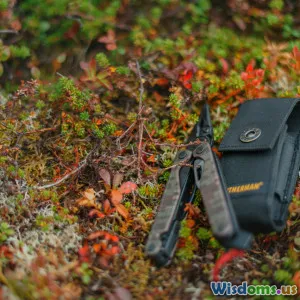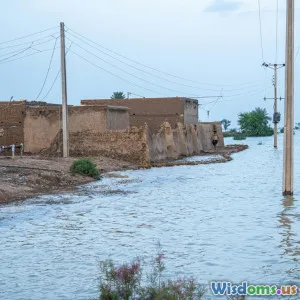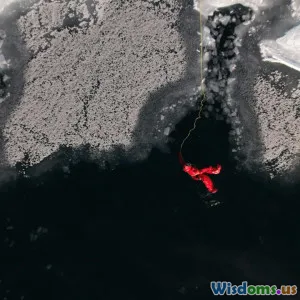
7 Common Survival Myths That Could Put You in Serious Danger
8 min read Uncover 7 survival myths that can endanger you and learn the facts that could save your life in the wild. (0 Reviews)
7 Common Survival Myths That Could Put You in Serious Danger
When it comes to survival skills and outdoor adventure, knowing the truth can be the difference between life and death. Unfortunately, many widely circulated survival myths circulate and can mislead even well-intentioned adventurers. Believing in false survival information can delay your decision-making, waste valuable resources, or worse, lead you toward life-threatening mistakes. Whether you’re an experienced outdoorsperson or a weekend hiker, identifying and debunking these myths is critical.
In this article, we dissect seven common survival myths, explaining why they are dangerously misleading and providing the factual advice you need to prepare for the wild.
Myth 1: You Can Purify Water by Urinating in It
A popular myth suggests that adding urine to water can purify it because urine has some antiseptic properties. This is totally false and extremely dangerous. Urine contains toxins and waste products your body is eliminating because they are harmful; introducing these into your water source contaminates it further.
The Reality:
Water purification requires filtering or disinfecting processes like boiling, chemical tablets (e.g., iodine or chlorine), or UV purification devices. Studies show that untreated water can harbor pathogens causing life-threatening diseases such as giardiasis, dysentery, and cholera. Drinking urine-contaminated water only increases your risk.
Example: A study from the Centers for Disease Control and Prevention (CDC) recommends at least one minute of boiling water at a rolling boil to kill parasites and bacteria.
Myth 2: You Should Always Build a Fire to Signal for Help
While fire is a traditional signaling method, sometimes starting a fire can be more hazardous than beneficial—especially in dry environments or if you do not have the means to manage it properly.
The Reality:
Creating smoke signals can attract rescuers, but uncontrolled fires can cause wildfires or consume your vital fuel reserves unnecessarily. Instead, use bright-colored clothing, reflective gear, mirrors, or emergency whistles to signal.
Consider your environment: a forest fire risk is severe in many regions, and fire suppression is often a high concern. Additionally, moving toward potential rescue routes or leaving trail markers, such as rocks or sticks arranged in patterns, can also aid search parties.
Myth 3: You Should Drink Your Own Urine to Stay Hydrated
This myth circulates frequently in popular media—but drinking urine is actually harmful and counterproductive.
The Reality:
Urine is mostly water but also contains salts and waste products your kidneys expel. Drinking urine increases your body’s salt load, causing dehydration rather than preventing it. In a survival situation, managing hydration effectively means finding or purifying water from natural sources.
Warning: If desperate, do not consume urine. Instead, concentrate on collecting rainwater, dew, or finding transpiration methods to extract water from plants.
Myth 4: You Can Eat Any Plant If You Recognize It Somewhere Else
Survival handbooks often caution about eating wild plants, but a common myth is that all plants that look like ones you know are safe to eat.
The Reality:
Many plants have toxic look-alikes. For example, wild carrots and poison hemlock appear very similar but have vastly different effects—the latter being deadly. Without expert knowledge, eating unknown plants is a huge risk.
Expert Insight: The U.S. Forest Service advises that if you’re unsure about plant identification, do not eat it.
Myth 5: Your Body Will Automatically Enter Survival Mode to Save You
Some believe the human body instinctively conserves energy and manages reserves perfectly during survival events.
The Reality:
Biologically, humans can suffer poor decision-making, panic, and exhaustion during stressful survival situations. The absence of modern comforts, food, water, and shelter accelerates deterioration rapidly.
Proper survival training, mental preparedness, and physical conditioning are required to enhance survival chances, rather than relying on instinct alone.
Myth 6: Always Stay Put and Do Not Move to Avoid Getting Lost
While staying put can be good advice in some scenarios, blindly staying where you are is not always the correct choice.
The Reality:
If you are disoriented but know a safe route to water, shelter, or a path, moving strategically can increase your survival odds. Factors such as weather, wildlife risks, and your physical condition impact whether moving is better than waiting.
Scenario: In extreme heat, staying stationary can lead to heat exhaustion and dehydration. In such cases, traveling during cooler times of the day to safer ground is prudent.
Myth 7: You Can Always Make a Shelter from Natural Materials Found Nearby
Many survival guides romanticize the idea of building elaborate shelters, but often these materials are scarce or inadequate.
The Reality:
While natural shelters (like lean-tos) are useful, you should always plan to carry lightweight shelter options like emergency bivvies or space blankets. Building a shelter from scratch can be time-consuming and energy-intensive, often impractical in harsh weather.
A combination of preparedness and improvisation is key. If you must build a shelter from natural materials, know which materials insulate best and provide waterproofing.
Conclusion
Misguided survival myths can foster dangerous decisions when you most need clear-headed action. Being armed with accurate, practical knowledge is crucial whether you hike, camp, or work in environments where emergencies might arise.
Avoid these seven myth traps:
- Never purify water with urine.
- Use signaling methods appropriate and safe for your environment.
- Don’t drink your own urine for hydration.
- Avoid eating unidentified plants.
- Rely on training over instinct alone.
- Assess when moving or staying put is best.
- Prepare with reliable shelter options.
As renowned survival instructor Cody Lundin says, "Reality will punch you in the nose first—don't let myths falsify your fight back." Equip yourself with science-backed knowledge and real-path survival skills for your next wilderness adventure.
Stay informed, stay prepared, and most importantly—stay alive.
References
- CDC: Safe Drinking Water, https://www.cdc.gov/healthywater/drinking/public/water_treatment.html
- U.S. Forest Service Wild Edible Plants, https://www.fs.usda.gov/Internet/FSE_DOCUMENTS/stelprdb5357373.pdf
- Lundin, C. (2010). 98.6 Degrees: The Art of Keeping Your Ass Alive!.
- National Park Service: Wilderness Basics, https://www.nps.gov/articles/survival.htm
Rate the Post
User Reviews
Popular Posts





















